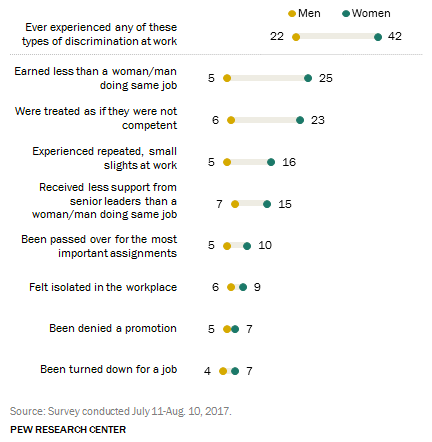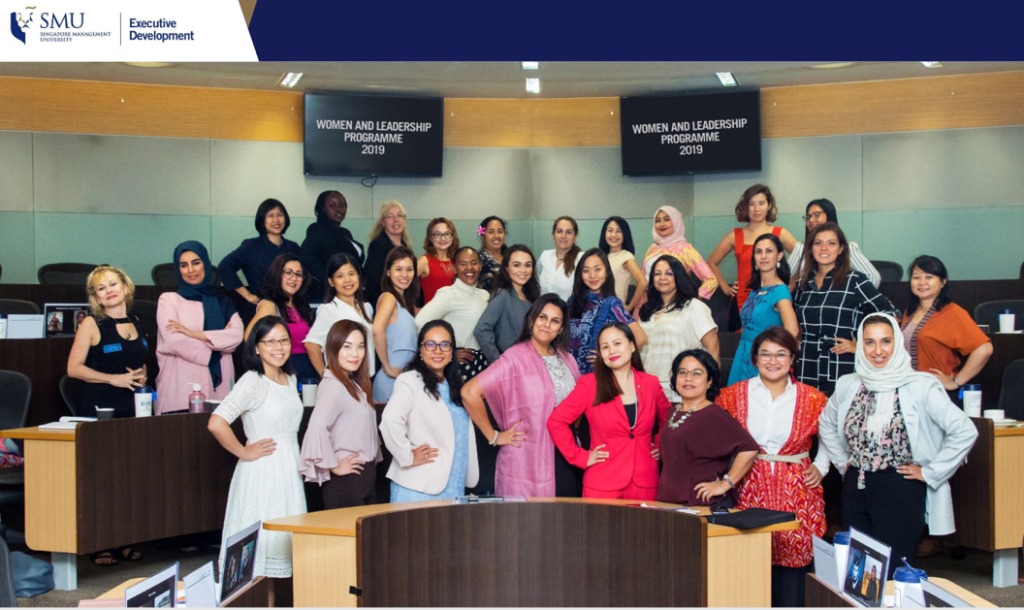On this International Women’s Day 2020 with the theme #EachforEqual, I want to sort out my jumbled thoughts about women and / in leadership — a topic that fascinated me recently. It first started out with me sharing
a Tweet post from Marie Elka Pangestu, former Indonesia’s Minister of Trade that has just commenced her new role as the World Bank’s Managing Director for Development Policy and Partnership, and saying that “#Women + #Leadership = #WomenPower”. Then a male friend asked me:
why does it have to be gender-based? She’s selected because of merit and networks. His question was honest and his statement was valid. But it brought me to a more inherent question: why does leadership have to be gendered at all?
Don’t get me wrong, I am all for equal opportunity for all, merit-based system, fair competition regardless whether one is male or female. I believe there are good women and bad women, as well as good men and bad men out there. When it comes to leadership, however, we should apply a gender lens to it. Looking at leadership without a gender lens is like swimming without goggles. Why?
First, negating the gender aspect in leadership is equal to discounting the fact that many women face many more hurdles in their multiple roles as the caretaker of the household (as a wife, a mother, a daughter, or a sister) aside from their role at work as a leader.
My earlier piece in Jakarta Post about “care work”– cleaning, cooking and caring for the children and the elderly as well as the sick – highlighted gender inequality in unpaid care work is the missing link in the analysis of gender gaps. There, I cited an OECD-commissioned study that found in all regions of the world, women spend on average between three and six hours per day on unpaid care activities, while men spend between half an hour and two hours. This means, women are more prone to suffer from time poverty! Why does it matter? Because time spent on unpaid care by women is fundamental to defining their time, energy, finances, social and political capital
(Kate Donald, 2014). Domestic obstacles that women have to face everyday, can impede women from keeping up with their male counterparts to go higher at the workplace or at any leadership role. I think this image (that I got from
a viral post of the Mahindra group’s chairman Anand Mahindra) sums up my first point.
 “I’m so sick running as fast as I can, wondering if I’d get there quicker if I was a man”- The Man, Taylor Swift
“I’m so sick running as fast as I can, wondering if I’d get there quicker if I was a man”- The Man, Taylor Swift
Second, applying gender lens to leadership is essential because (unfortunately) there are still many cases of gender-based discrimination at workplace.
Workplace gender discrimination means “that an employee or a job applicant is treated differently or less favorably because of their sex or gender, or because the person is affiliated with an organization or group that is associated with a particular sex or gender”. A
recent survey unfolds that around four-in-ten working women (42%) in the US say they have faced discrimination on the job because of their gender: from earning less than male counterparts for doing the same job to being passed over for important assignments (see diagram below from that study).

This second point about workplace gender discrimination entails a much more complex issue than my first point. Yes, we acknowledge that some certain systems at work have not been fair for women, and we can vehemently berate patriarchy. But, sometimes we are reluctant, if not complacent, to even think of
other factors that may affect male-dominated leadership position at work and gender gap in earnings.
Bertrand, Goldin, and Katz (2010) surveyed MBAs from a top US business school from the graduating classes of 1990 to 2006 to understand how career dynamics differ by gender. They found that although male and female MBAs got nearly identical earnings at the onset of their career, within a few years after the MBA completion, their earnings soon diverged with men’s labour incomes higher than women’s. In a nutshell, they identified three proximate reasons for the rising gender gap in earnings.
- First, the differences between men and women in business school courses and grades (men took more finance courses and had higher GPAs in business school) later contribute to the earnings gap, because of large labour market returns to these components of MBA training.
- The second reason lies in the differences in career interruption, where female labour participation declined in the year of their first child birth, and a further reduction over the next four years: at 10 years out, women are 22 percentage points more likely than men to have had at least one career interruption, which is apparently costly in terms of future earnings.
- Lastly, they found that women work shorter hours: women with children approximately work 24 percent fewer weekly hours than the average male; women without children work only 3.3 percent fewer hours. MBA mothers would favour jobs that are family friendly, avoid jobs with long hours and greater career advancement possibilities, driven by a growing share working part-time, often self-employed.
I found this study to be insightful, reminding me that while gender discrimination at work is still sadly pervasive in many workplaces, it is also a matter of competence (reason #1) and more importantly one’s choices (reason #2 and #3) that can explain why women still disproportionately don’t reach on top of the leadership ladder at workplace and why men earn more, at least in the context of financial and corporate sectors being surveyed there. I feel this study warns us not to jump to conclusion easily, that the next time we see only few women placed in certain leadership position or we spot a gender gap in earnings, we should first examine the degrees of competence and choices entailed in it, before we label a workplace discriminatory against women. Yet, it is safe to assume that women’s choices to have career interruptions (reason #2) and to work shorter hours (reason #3) can be linked back to the division of care work explained in my first point.
I wish we all continue to cherish women in leadership because they must have overcome the invisible domestic obstacles that made them fight twice harder than the men; and there are still rampant and undocumented cases of gender-based discrimination at work.
When we choose to challenge stereotypes, fight bias, mainstream the gender lens, and understand & respect women’s choices, we can foster
“collective individualism” where our individual actions, conversations, behaviors and mindsets can have an impact on our larger society. Until then, we can make
#EachforEqual happen.
Finally, on this International Women’s Day 2020, let us celebrate women taking leadership role with the same pride we take to celebrate women exercising their free will to focus on motherhood.
 At the Women and Leadership Programme 2019 hosted by Singapore Management University, we all stood like this in superhero pose. Amelia Sheperd in Grey’s Anatomy suggests that there’s a scientific study showing that if you stand like this in superhero pose for just five minutes before a job interview, a big presentation or a really hard task, you will not only feel more confident — you will perform measurably better.
At the Women and Leadership Programme 2019 hosted by Singapore Management University, we all stood like this in superhero pose. Amelia Sheperd in Grey’s Anatomy suggests that there’s a scientific study showing that if you stand like this in superhero pose for just five minutes before a job interview, a big presentation or a really hard task, you will not only feel more confident — you will perform measurably better.
First published on Devi & Development on 8 March 2020, reproduced here with permission from the author. 